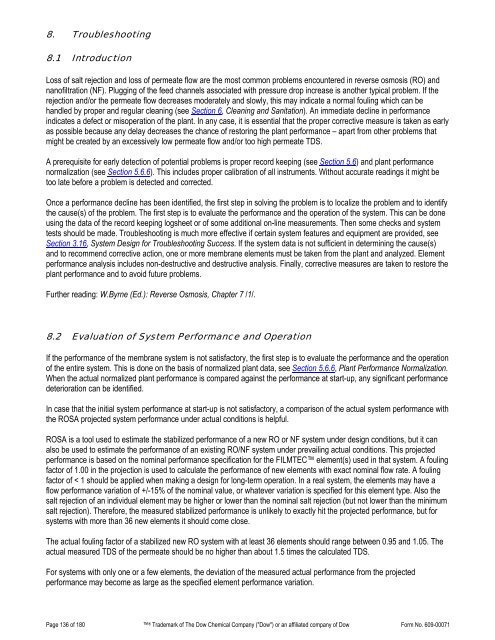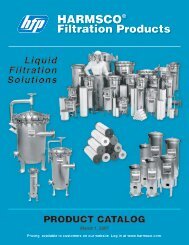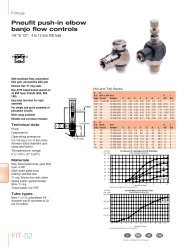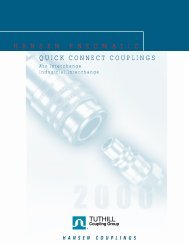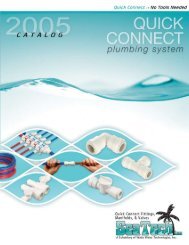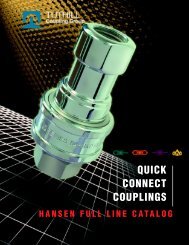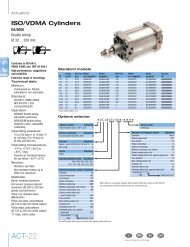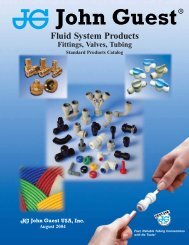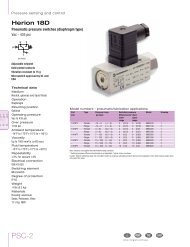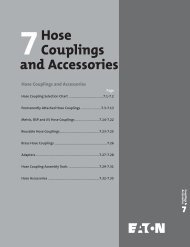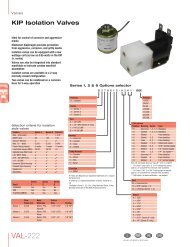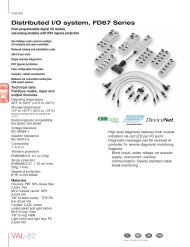FilmTec Technical Manual - Chester Paul Company
FilmTec Technical Manual - Chester Paul Company
FilmTec Technical Manual - Chester Paul Company
Create successful ePaper yourself
Turn your PDF publications into a flip-book with our unique Google optimized e-Paper software.
8. Troubleshooting8.1 IntroductionLoss of salt rejection and loss of permeate flow are the most common problems encountered in reverse osmosis (RO) andnanofiltration (NF). Plugging of the feed channels associated with pressure drop increase is another typical problem. If therejection and/or the permeate flow decreases moderately and slowly, this may indicate a normal fouling which can behandled by proper and regular cleaning (see Section 6, Cleaning and Sanitation). An immediate decline in performanceindicates a defect or misoperation of the plant. In any case, it is essential that the proper corrective measure is taken as earlyas possible because any delay decreases the chance of restoring the plant performance – apart from other problems thatmight be created by an excessively low permeate flow and/or too high permeate TDS.A prerequisite for early detection of potential problems is proper record keeping (see Section 5.6) and plant performancenormalization (see Section 5.6.6). This includes proper calibration of all instruments. Without accurate readings it might betoo late before a problem is detected and corrected.Once a performance decline has been identified, the first step in solving the problem is to localize the problem and to identifythe cause(s) of the problem. The first step is to evaluate the performance and the operation of the system. This can be doneusing the data of the record keeping logsheet or of some additional on-line measurements. Then some checks and systemtests should be made. Troubleshooting is much more effective if certain system features and equipment are provided, seeSection 3.16, System Design for Troubleshooting Success. If the system data is not sufficient in determining the cause(s)and to recommend corrective action, one or more membrane elements must be taken from the plant and analyzed. Elementperformance analysis includes non-destructive and destructive analysis. Finally, corrective measures are taken to restore theplant performance and to avoid future problems.Further reading: W.Byrne (Ed.): Reverse Osmosis, Chapter 7 /1/.8.2 Evaluation of System Performance and OperationIf the performance of the membrane system is not satisfactory, the first step is to evaluate the performance and the operationof the entire system. This is done on the basis of normalized plant data, see Section 5.6.6, Plant Performance Normalization.When the actual normalized plant performance is compared against the performance at start-up, any significant performancedeterioration can be identified.In case that the initial system performance at start-up is not satisfactory, a comparison of the actual system performance withthe ROSA projected system performance under actual conditions is helpful.ROSA is a tool used to estimate the stabilized performance of a new RO or NF system under design conditions, but it canalso be used to estimate the performance of an existing RO/NF system under prevailing actual conditions. This projectedperformance is based on the nominal performance specification for the FILMTEC element(s) used in that system. A foulingfactor of 1.00 in the projection is used to calculate the performance of new elements with exact nominal flow rate. A foulingfactor of < 1 should be applied when making a design for long-term operation. In a real system, the elements may have aflow performance variation of +/-15% of the nominal value, or whatever variation is specified for this element type. Also thesalt rejection of an individual element may be higher or lower than the nominal salt rejection (but not lower than the minimumsalt rejection). Therefore, the measured stabilized performance is unlikely to exactly hit the projected performance, but forsystems with more than 36 new elements it should come close.The actual fouling factor of a stabilized new RO system with at least 36 elements should range between 0.95 and 1.05. Theactual measured TDS of the permeate should be no higher than about 1.5 times the calculated TDS.For systems with only one or a few elements, the deviation of the measured actual performance from the projectedperformance may become as large as the specified element performance variation.Page 136 of 180 ® Trademark of The Dow Chemical <strong>Company</strong> ("Dow") or an affiliated company of Dow Form No. 609-00071


